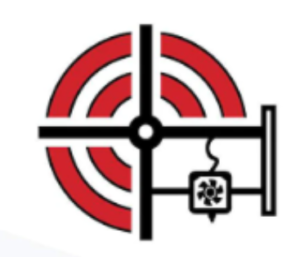Online marketplace Etsy has implemented a rule change requiring all 3D printed goods on the site to be original designs. The update to the site’s Creativity Standards states,
¨Items produced using computerized tools: Physical items that a seller produced in their personal shop or home, using computerized tools such as a laser printer, 3D printer, CNC or Cricut machine. These items must be produced based on a seller’s original design and are often personalized or customized to a buyer’s specification.¨
That would imply that you can not download designs off of Thingiverse or Printables and then sell the resulting item. Even if you got a license, or it is allowed through the license, this would not be permitted on Etsy. Also, you taking my design and customizing it would not be allowed. If you customize an item, you can no longer put a generic text in; the text and photo must be original. Etsy clearly wants to stimulate original designs on its platform. However, you can still use print farms to fulfill your order. One silly thing is that, as long as you mention it, you can also still use AI tools to make files and then sell them.
This move is bound to affect 3D print farms, the design community, and beyond. While Etsy is an easy place to set up a shop, for most, it’s a difficult one on which to make money. But there are people thriving on Etsy and making significant revenue there using 3D printing. So there is a lot of good and bad to unpack here.
- A positive effect is that the Flexi Dragon spam will hopefully now be abated. Occasionally, certain very popular 3D print files, such as Primoz Cepin´s Hairy Lion, will be completely exploited by dozens of sellers on Etsy. This reduces creativity, as well as the number of options available for 3D printing.
- This move should also clarify that pirating content should not be allowed. This could protect Etsy from large brands, and also protect creatives from piracy.
- A lot of creatives on Makerworld and other platforms freely share models but don’t want them to be shared commercially. This should reduce the instances of piracy by people who don’t follow the licenses.
- Thangs and other platforms make money from subscriptions on designers. Many designers are now licensing their content commercially and making money from subscriptions. For a certain group, these subscriptions are now going to be less useful, and the creatives could make a lot less money.
- We´re probably going to get a lot of Flexi Dragons with different files, whereby people are modding files slightly in CAD to make them seem original.
- Hopefully, people will now hire designers to create original files, which may expand the number of 3D printed items on the site.
- Creative people will now hopefully get rewarded for making original items.
- The one thing that makes me doubt that this will happen is that AI tools are still allowed. Text-to-STL tools are evolving quickly, and Backflip and other tools are getting better and easier to use. The biggest effect of this rule change will, therefore, be that people will make their own AI designs, which could be OK, but also that people will use AI to copy existing designs and pass them off as original.
I worry the most about AI limitation designs, where someone will go to a tool and simply ask it to make a 3D printed flexi lobster while giving the original creation. It is of course much easier to download in life. It’s much faster to take someone else’s work and focus on profiting off of it. It is also faster to just make an ersatz AI copy of a thing.
If this happens, then creativity will be diminished. No one will spend hours or days engineering and inventing a thing if it will be passed off immediately by thousands of others. With memes, it is comparatively easy to edit a picture to make it work. And already there, we’re seeing little or no credit going to the people in the picture, the person that has taken the picture, and the person editing the picture. With 3D printing, the problem is that engineers and designers are not rewarded or recognized; the latter is especially important. Perhaps you want to open source all the things. Then recognition, and people linking or connecting to you, may just be all the reward you need. On Etsy, previously, there was almost no recognition or attribution to the original designers.
If we don’t reward creators, then we will stagnate. If we manage to reward people in some way, then we will thrive. Of course AI tools can bring about their own kind of innovation. And we will continue to see many things, some of them perhaps unique. But, having engineers apply their knowledge and experience will add additional functionality and creativity to the total pool of available things.
Yes, AI can remix shapes quickly, but it will not come up with something like the Hairy Lion, which was part inspiration and part 3D printing knowledge. Something like the Hairy Lion needs a human, and an experienced one at that. The idea of printing a cylinder and then using the stringing effect to create the mane of a lion is something novel and interesting that can not be done through AI. We should be careful that marketplaces don’t make 3D printing a less creative and more boring industry. In this case, it is difficult to see now what the ultimate effects of this decision by Etsy will be. I’m fearful that little true innovation and recycled AI slop will be the unintended consequence of this decision. But perhaps this will rid us of thousands of the same models being sold and usher in a new era of creativity?
Subscribe to Our Email Newsletter
Stay up-to-date on all the latest news from the 3D printing industry and receive information and offers from third party vendors.






